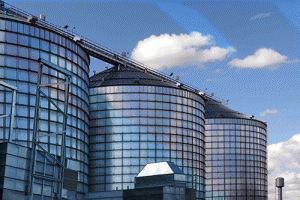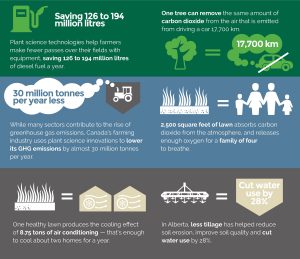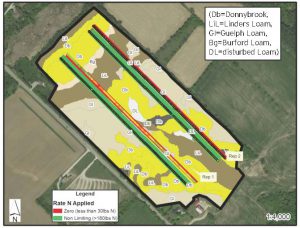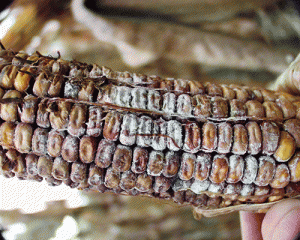Hunting on farmland
BUILDING A RELATIONSHIP WITH HUNTERS

IN 2015, 23,000 people took the Ontario Hunter Education Course, according to the provincial Ministry of Natural Resources and Forestry (OMNRF), and a total of 450,000 people currently hold a ‘Hunting’ Outdoors Card.
While there are millions of acres of crown land for hunters to access, many are keen to enter local farmland for deer, wild turkey, migratory waterfowl, partridge, moose, elk, bear, and other wild game.
What do farmers need to know, when approached by a hunter for access, in order to protect themselves and their farmland?
One thing is clear: as stated in the OMNRF 2016 Hunting Regulations Summary (Fall 2016 – Spring 2017), “Positive landowner or occupier/hunter relationships are important to the future of hunting in Ontario”.
KNOW THE LAW
To help keep relations positive, the Summary advises hunters on a wide range of issues, and makes it clear that the onus is definitely on the hunter to know the law and respect the rights of property owners.
“It is your responsibility to find out who owns the land you wish to hunt on and obtain permission,” the Summary states. “Be sure you are familiar with the ‘Occupiers Liability Act’ and the ‘Trespass to Property Act’ before entering private land.”
OMNRF spokesperson Jolanta Kowalski clarifies, however, that “any person can enter onto private property for lawful purpose without asking permission from the landowner/occupier until the entrant has received notice that entry is prohibited or activities are regulated by the land owner/occupier.”
That is, if there are no fences on, or cultivation of, a particular piece of land — which automatically signifies entry is prohibited (as explained in the Trespass to Property Act) — landowners must put up signs or symbols prohibiting entry or prohibiting certain activities.
Another legal way to prohibit entry is to give verbal notice once someone is discovered near or on your land.
AGREEMENTS
That leads us to the question of whether a verbal agreement is sufficient between landowners and hunters.
“While written permission is not required in most instances for hunters to access farmland,” Kowalski says, “it is still a good idea to get it.”
She lists common factors that might be found in a hunting agreement to include: specific dates and hours of entry, game species, land access points, where vehicles may be parked, and what parts of the property are out of bounds.
The Ontario Federation of Anglers and Hunters (OFAH) is also supportive of written permission instead of verbal agreements. In addition to those already mentioned, OFAH spokesperson Shawn Cayley lists other issues that should be covered to include vehicle identification and proof of proper hunting licenses.
“The more of this information that is shared between landowner and hunter the better,” Cayley notes.
A printable permission agreement form is available for OFAH members at www.ofah.org/wp-content/uploads/2015/03/LandownersForm1.pdf
LIABILITY
In terms of liability, Ontario landowners should become familiar with the Occupiers’ Liability Act (www.ontario.ca/laws/statute/ 90o02) and check with a lawyer about any concerns. For hunters, OFAH provides information about insurance options (www.ofah.org/insurance) and offers insurance as well.
Regardless of any agreement, during the gun season for deer, elk, or moose, hunters must wear hunter orange, but except for woodcock, this does not apply to hunting migratory game birds or when in a tree-stand during open season for black bear (when it’s outside the gun season for deer, elk, or moose). Any injuries from discharge of a firearm during hunting or trapping that require a doctor’s attention must be reported to a Conservation Officer. See sidebar for more regulations to which anyone hunting on your land must adhere.
Overall, it’s about positive relationships, and courtesy on everyone’s part can go a long way. Matt DeMille, OFAH manager of fish and wildlife services, notes that “although many landowners do not expect anything in return for allowing hunters on their land, many hunters help out with projects, offer harvested wild game meat to the landowner, or provide other tokens of appreciation.”
HUNTING REGULATIONS IN ONTARIO
From the Ontario Ministry of Natural Resources 2016 Hunting Regulations Summary (Fall 2016 – Spring 2017).
- A complete hunting licence for Ontario residents consists of a Hunting Outdoors Card plus the required hunting licence tags plus any applicable hunting licences and game seals and/or validation tags. Non-residents must meet different requirements.
- Hunting firearms include rifles, shotguns, muzzle-loading guns, air/pellet guns, bows and crossbows. Semi-automatic or repeating (but not fully-automatic) firearms are also permitted.
- Hunters who handle or discharge firearms without due care are liable to a fine of up to $25 000, imprisonment for up to two years, or both, and also possible criminal charges.
- Hunters may only hunt from half an hour before sunrise to half an hour after sunset except for hunting raccoon, spring wild turkey, and in some areas, pheasant.
- Aircraft, including drones, may not be used while hunting. Vehicles of any kind, including boats, may not be used for chasing, injuring or killing wildlife.
- It is illegal to have a loaded firearm in or on, or discharge a firearm from, any aircraft, boat, or vehicle, or anything towed by any type of vehicle (with official exceptions from the OMNRF possible if a hunter has a mobility impairment).
- Snares cannot be used for hunting, except by the holder of a resident small game licence north of the French and Mattawa rivers.
• It is illegal to use poison or adhesives to kill, injure, or capture wildlife.
www.ontario.ca/document/ontario-hunting-regulations-summary •


























